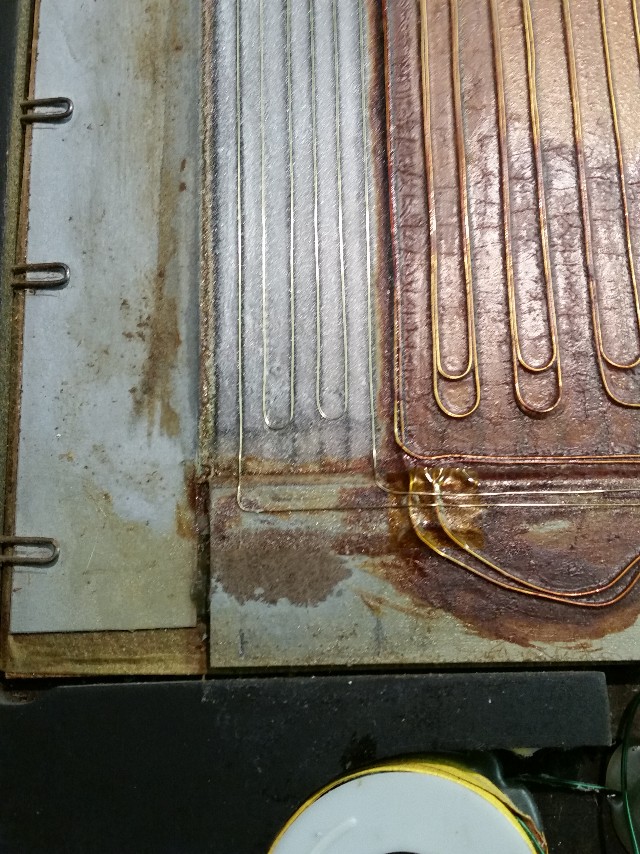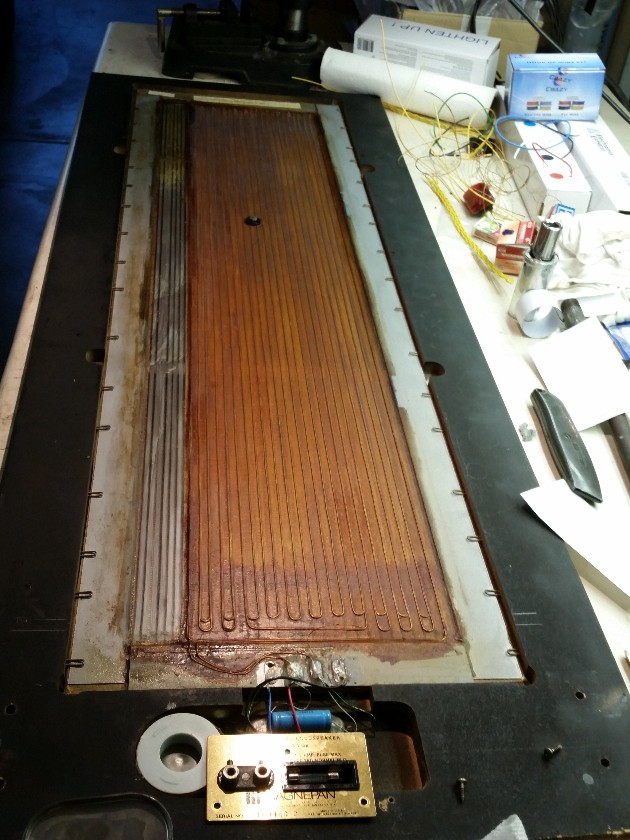01-13-2019, 10:49 PM
This weekend's other project was to replace the wiring on the tweeter panel on the SMGAs
First job is to -carefully- strip the old wires away from the diaphragm using acetone to dissolve the adhesive layers, and clean the surface in preparation for the new wires
After that, spray adhesive is applied (masking areas where this is not wanted). 3M Super77 is the order of the day. Apparently the inventor (Jim Winey) was a 3M employee, and on seeing Mylar film and various adhesive products he was inspired to experiment with loudspeakers. Once the glue is ready, It takes a steady hand to lay out the wire pattern:

The whole speaker consists of a bass/treble section of heavier gauge wire, and a slender section for high frequencies:

A simple crossover (one inductor, one capacitor) takes care of dividing the audio between the two circuits.
Once the glue is dry, an over-coat of water based adhesive is applied, per the factory instructions.
Then the wire tails can be soldered to the tag strip. Here is where things get tricky, because the wire is enamel coated Aluminum (for light weight). Even with aluminum solder and good flux, it isn't easy to get a good joint.
All done now!
Cheers
Ed
First job is to -carefully- strip the old wires away from the diaphragm using acetone to dissolve the adhesive layers, and clean the surface in preparation for the new wires
After that, spray adhesive is applied (masking areas where this is not wanted). 3M Super77 is the order of the day. Apparently the inventor (Jim Winey) was a 3M employee, and on seeing Mylar film and various adhesive products he was inspired to experiment with loudspeakers. Once the glue is ready, It takes a steady hand to lay out the wire pattern:
The whole speaker consists of a bass/treble section of heavier gauge wire, and a slender section for high frequencies:
A simple crossover (one inductor, one capacitor) takes care of dividing the audio between the two circuits.
Once the glue is dry, an over-coat of water based adhesive is applied, per the factory instructions.
Then the wire tails can be soldered to the tag strip. Here is where things get tricky, because the wire is enamel coated Aluminum (for light weight). Even with aluminum solder and good flux, it isn't easy to get a good joint.
All done now!
Cheers
Ed
I don't hold with furniture that talks.



![[-] [-]](https://philcoradio.com/phorum/images/bootbb/collapse.png)


